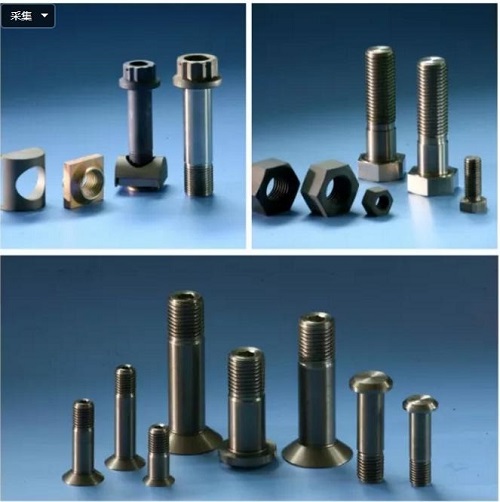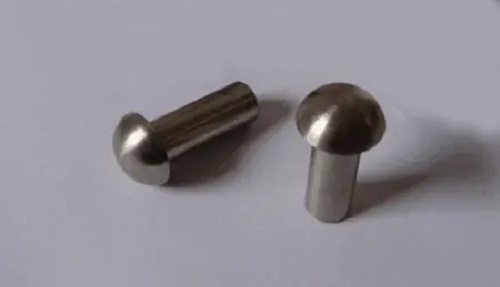Aviation fastener knowledge (HY-marketing department)
 Aviation fastener may not be as exciting as an engine, but a passenger plane actually requires millions of fasteners. For example, the number of fasteners on a Boeing 747 reaches 3 million. It can be said that the safety of millions of people every day depends on the correct selection and use of aviation fasteners.
Aviation fastener may not be as exciting as an engine, but a passenger plane actually requires millions of fasteners. For example, the number of fasteners on a Boeing 747 reaches 3 million. It can be said that the safety of millions of people every day depends on the correct selection and use of aviation fasteners.
Aviation fasteners are very different from other common industrial fasteners, and in many aspects are not replaceable at all, or even comparable. For example, for the bolts used on airplanes, some materials are corrosion-resistant steel, and after a strict heat treatment process, the tensile strength can exceed 125KSI; in contrast, the materials of ordinary industrial fasteners are mostly low-carbon steel , And there is almost no sufficient anti-corrosion treatment, and its tensile strength is between 50-60KSI.
From the product type to distinguish, aviation fasteners can be divided into:
-
Bolts/screws
-
Nut
-
Rivets/washers/pins
-
Other special products
From the application type to distinguish, aviation fasteners can be divided into:
-
Permanent connection fasteners
-
Removable connection fasteners
Choice of fastener material usually involves the following five aspects:
-
Maximum and minimum application temperature
-
Environmental anti-corrosion requirements
-
Fatigue and load force
-
Anti-loose way
-
Stress corrosion cracking problem
Therefore, for the selection of aviation fastener materials, it is necessary to refer to parameters such as shear strength, tensile strength, fatigue strength, application temperature, and corrosion resistance. Taking the installation and fixing of an aircraft engine as an example, only a few bolts may be needed to fix a 7-8 ton engine to the wing, so these bolts must have sufficient strength. At present, most of the fasteners used to fix the engine are special titanium alloy bolts.
For aviation fasteners, the more common materials are alloy steel, stainless steel, aluminum alloy, titanium alloy, nickel-based alloy, etc., among which aluminum alloy and titanium alloy materials account for the vast majority.
Aluminum alloy material represents light weight, excellent thermal and electrical conductivity, corrosion resistance and excellent ductility. The material of most solid rivets used in aircraft structures is aluminum alloy. According to different strength grades and heat treatment conditions, it can be subdivided into a variety of aluminum alloy materials, of which 1100, 2017-T, 2024-T, 2117-T and 5056 are the five most common grades. However, in the high temperature application environment, the strength of aluminum alloy materials will drop sharply, so it is not suitable for high temperature applications.
 Strength of titanium alloy is almost the same as that of medium-strength alloy steel, but its weight is less than half of the latter. Titanium alloys have excellent strength, corrosion resistance, and high temperature resistance, so they are more widely used in aircraft fuselages, engines and other structures. Its application temperature is -210C° to 425C°, so even if the cost is slightly higher, from the perspective of reducing weight, titanium alloy is still the material of choice for structural fasteners.
Strength of titanium alloy is almost the same as that of medium-strength alloy steel, but its weight is less than half of the latter. Titanium alloys have excellent strength, corrosion resistance, and high temperature resistance, so they are more widely used in aircraft fuselages, engines and other structures. Its application temperature is -210C° to 425C°, so even if the cost is slightly higher, from the perspective of reducing weight, titanium alloy is still the material of choice for structural fasteners.
In the failure modes of most titanium alloy fasteners, insufficient knowledge of design and materials are often the main reasons. For example, titanium alloy parts cannot be plated with cadmium or silver, because this will be the source of embrittlement of titanium alloy at room temperature.
In addition, in the installation process of titanium alloy fasteners, the applied torque, friction coefficient, assembly process, etc. are all very complicated uncertain factors. In some extreme cases, the combined force of multiple factors will lead to titanium alloy fasteners. Failure occurred. For example, in the installation process of titanium alloy threaded fasteners, problems such as slippage are very easy to occur. Therefore, when selecting titanium alloy fasteners, the surface lubrication treatment becomes more important.
It can be seen that in the design of aircraft structure, the selection of fasteners requires more professional technical knowledge and more detailed consideration.
Aviation fastener part number(P/N)
Part number is as important to a part as the name is to each of us. From the selection in the design phase, to the testing and certification in the test phase, to the procurement in the assembly and manufacturing phase, as long as you use fasteners, then It is inseparable from the part number, and it cannot be mistaken.
Number of fasteners on an airplane is in the millions. Although they are not as obvious as the landing gear and engine, they are indeed an important part of the airplane, from the nose to the tail, covering every corner of the airplane.
Before talking about the part number, let’s get a general understanding of the types of aviation fasteners.
From the perspective of application, it can be divided into two categories: detachable and permanent installation. In addition, a wide range of aviation fasteners also include threaded sheaths, quick-release fasteners, door lock structures and hydraulic pipeline components.
Part number of the fastener usually consists of two parts:
1) Specification number or standard number
2) Part information, including size, material and surface treatment, etc.
For example, BACB30XT8HK16, BACB30XT is the standard number, which represents Boeing standard 100-degree countersunk head ring grooved nails; the letters and numbers at the back reflect the basic information of the part, 8 represents 1/4 inch diameter, H represents the choice of degumming groove, and K represents The surface of the fastener is sprayed with aluminum, and 16 represents the thickness of the interlayer 1 inch.
Here I will focus on the diameter code and the sandwich thickness code. The numbers inside are not the actual diameter or length dimensions, but the code. Normally, for rivets, the diameter code is 1/32 inch, so the diameter code -8 in the above example is 1/4 inch; and almost all fastener length codes are 1/16 inch Is a unit, so the length code -16 in the above example is 1 inch.
At present, in the field of aerospace manufacturing, the fastener standards frequently encountered are as follows:
MS: US military standard
NAS: American Aviation Standard
AS:it is part of the aviation standard of SAE
MA:it is part of SAE’s metric aviation standard
AN: US Air Force Naval Standard
DIN: German Industrial Standard
EN: European Committee for Standardization Standard
BAC :Boeing Standard
ABS/ASNA/NSA: Airbus Standard
Shanghai HY Industry Co., Ltd is qualified superalloy supplier.We have more than 20 years experience in kind of Nickel alloy,Cobalt alloy,Titanium alloy
Aviation industry material supply business accounted for nearly 30%,Welcome the majority of aviation industry enterprises to consult
When you want to know more about our products, please contact us:
https://hynickelalloy.com

